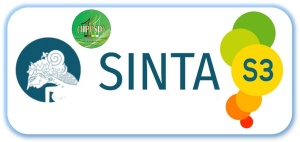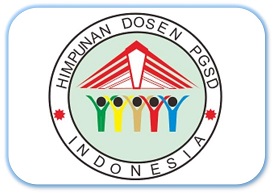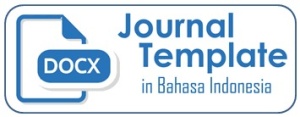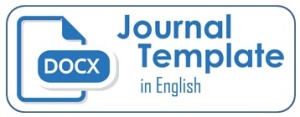Penerapan Model Blavo (Blended Learning Audio Video) Pada Perkuliahan Bahasa Indonesia Di PGSD FKIP Universitas Lambung Mangkurat
 ),
), (1) Universitas Lambung Mangkurat
 Corresponding Author
Corresponding Author
DOI : https://doi.org/10.24036/jippsd.v3i2.107622
Full Text:
 Language :
Language :
Abstract
Keywords
References
Amelia, R. (2018). The Application of Problem Based Learning (PBL) Approach for Elementary Schools Teachers. 1st International Conference on Creativity, Innovation and Technology in Education (IC-CITE 2018). Atlantis Press.
AMELIA, R. (2017). Laporan Penelitian: Pengembangan Model Blavo (Blended Learning Audio Video) Pada Perkuliahan Bahasa Indonesia Di Pgsd Fkip Universitas Lambung Mangkurat.
Auster, C. J. (2016). Blended learning as a potentially winning combination of face-to-face and online learning: An exploratory study. Teaching Sociology, 44(1), 39–48.
Benta, D., Bologa, G., & Dzitac, I. (2014). E-learning platforms in higher education. case study. Procedia Computer Science, 31, 1170–1176.
Boelens, R., De Wever, B., & Voet, M. (2017). Four key challenges to the design of blended learning: A systematic literature review. Educational Research Review, 22, 1–18.
Bonk, C. J., & Graham, C. R. (2012). The handbook of blended learning: Global perspectives, local designs. John Wiley & Sons.
Brookfield, S. (2017). Becoming a critically reflective teacher. John Wiley & Sons.
Fenton, C., & Watkins, B. (2010). Fluency in distance learning. IAP.
Frydenberg, M., & Andone, D. (2011). Learning for 21st century skills. International Conference on Information Society (i-Society 2011), 314–318. IEEE.
Garrison, D. R. (2011). E-learning in the 21st century: A framework for research and practice. Routledge.
Garrison, D. R., & Vaughan, N. D. (2008). Blended learning in higher education: Framework, principles, and guidelines. John Wiley & Sons.
Ghiffar, M. A. N., Nurisma, E., Kurniasih, C., & Bhakti, C. P. (2018). Model Pembelajaran Berbasis Blended Learning dalam Meningkatkan Critical Thinking Skills untuk Menghadapi Era Revolusi Industri 4.0. Prosiding Seminar Nasional STKIP Andi Matappa Pangkep, 1(1), 85–94.
Ghufron, G. (2018). Revolusi Industri 4.0: Tantangan, Peluang, Dan Solusi Bagi Dunia Pendidikan. Seminar Nasional Dan Diskusi Panel Multidisiplin Hasil Penelitian Dan Pengabdian Kepada Masyarakat 2018, 1(1).
Graham, C. R. (2006). Blended learning systems. The Handbook of Blended Learning, 3–21.
Heinze, A. (2008). Blended learning: An interpretive action research study. University of Salford.
Kristanto, A. (2011). Pengembangan Model Media Video Pembelajaran Mata Kuliah Pengembangan Media Video/Tv Program Studi Teknologi Pendidikan Fakultas Ilmu Pendidikan Universitas Negeri Surabaya. Jurnal Teknologi Pendidikan, 11(1), 12–22.
Kruger-Ross, M. J., & Waters, R. D. (2013). Predicting online learning success: Applying the situational theory of publics to the virtual classroom. Computers & Education, 61, 176–184.
Lexy, J. (n.d.). Moleong, 2011, metodologi penelitian Kualitatif. PT Remaja Rosdakarya, Bandung.
López-Pérez, M. V., Pérez-López, M. C., & Rodríguez-Ariza, L. (2011). Blended learning in higher education: Students’ perceptions and their relation to outcomes. Computers & Education, 56(3), 818–826.
Mortera-Gutiérrez, F. (2006). Faculty best practices using blended learning in e-learning and face-to-face instruction. International Journal on E-Learning, 5(3), 313–337.
Neumeier, P. (2005). A closer look at blended learning—parameters for designing a blended learning environment for language teaching and learning. ReCALL, 17(2), 163–178.
Pandit, R. K. (2018). Blended learning. Madhav Institute of Technology and Science. Gwalior. Retrieved from http ….
Prawiradilaga, D. S. (2016). Mozaik Teknologi Pendidikan: E-Learning. Kencana.
Risdianto, E. (2019). Analisis Pendidikan Indonesia di Era Revolusi Industri 4.0.
Rouf, I., & Sopyan, Y. (2007). Panduan Praktis Mengelola Blog. Jakarta: Media Kita.
Slamet, P. H. (2002). Pendidikan Kecakapan Hidup: Konsep Dasar. Dalam Juranal Pendidikan dan Kebudayaan. No. 037 (Hal 541-561). Jakarta: Balitbang Diknas.(di unduh 24 maret 2016).
Sukma, E., Mahjuddin, R., & Amelia, R. (2017). Literacy Media Development in Improving Reading and Writing Skill of Early Class Students in Elementary School Padang Utara Padang. 9th International Conference for Science Educators and Teachers (ICSET 2017). Atlantis Press.
Suwardana, H. (2018). Revolusi Industri 4. 0 Berbasis Revolusi Mental. JATI UNIK: Jurnal Ilmiah Teknik Dan Manajemen Industri, 1(2), 102–110.
Wahono, R. S. (2005). Pengantar e-Learning dan pengembangannya. Portal Www. Ilmukomputer. Com Indonesia) Diakses Tanggal, 22.
Yen, J.-C., & Lee, C.-Y. (2011). Exploring problem solving patterns and their impact on learning achievement in a blended learning environment. Computers & Education, 56(1), 138–145.
Zagal, J. P., & Bruckman, A. S. (2011). Blogging for facilitating understanding: A study of video game education.
 Article Metrics
Article Metrics
 Abstract Views : 714 times
Abstract Views : 714 times
 PDF Downloaded : 171 times
PDF Downloaded : 171 times
Refbacks
- There are currently no refbacks.







